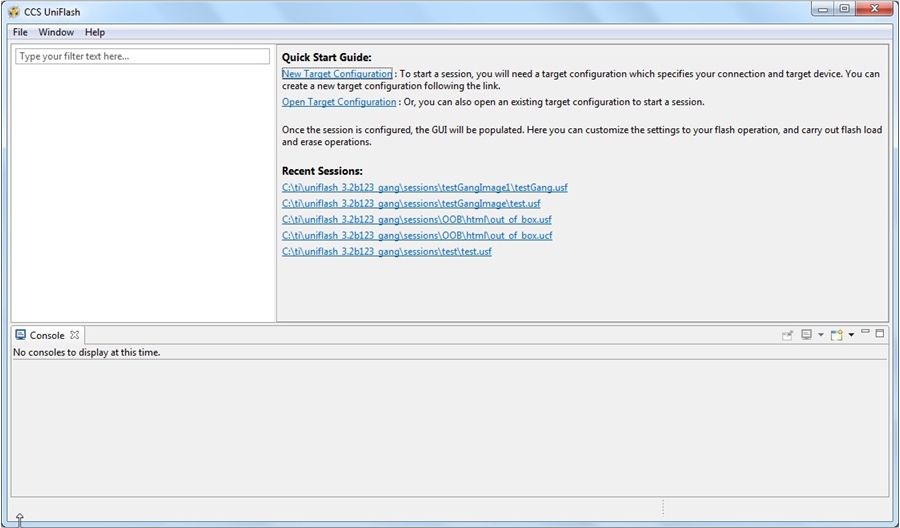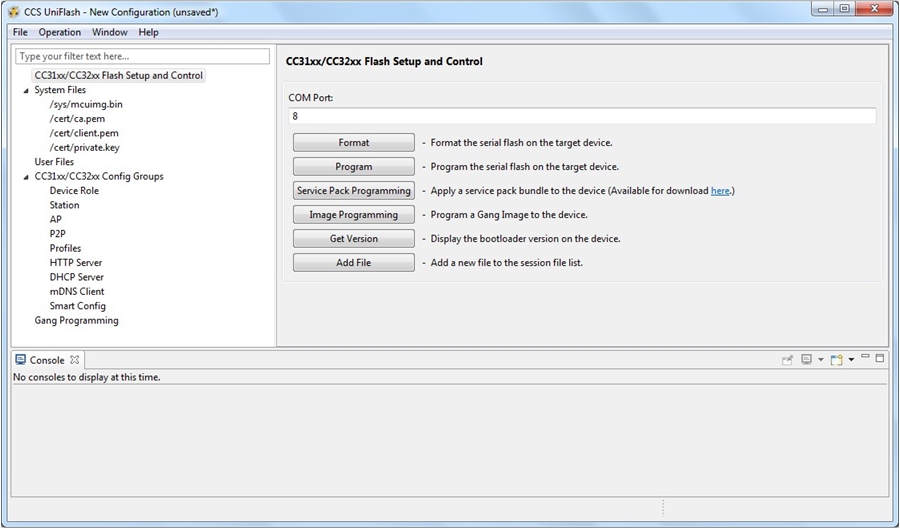SWRU558 June 2020 CC3100 , CC3100MOD , CC3200 , CC3200MOD
-
SimpleLink Wi-Fi CC3100, CC3200 UniFlash
- Trademarks
- 1 Introduction
- 2 Installation
- 3 Prerequisites
- 4 Uniflash Block Diagram
- 5 Session Support
- 6 Secured File System Support
- 7 GUI Interface
- 8 CC3200 Support
- 9 Command Line Support
- 10 Configuration File Support
- 11 Image Creation and Programming
- 12 Troubleshoot/Debugging
- 13 Limitations
- 14 References
- A UART Connection
7.1 Main Screen
Upon running the Uniflash, the user is required to choose the target setup.
There are two ways the target setup can be configured:
- One way is from the top bar by file → New Configuration
- The other way is from the Via the Quick Start Guide on the main screen by clicking New target configuration.
Currently, the Connection is set to CC3x Serial (UART) Interface and the Board or Device is set to SimpleLink WiFi CC3100/CC3200.
 Figure 6. Loading a Session
Figure 6. Loading a Session Loading the target configuration provides the Uniflash main screen.
The main screen is divided into three main sub screens:
- Uniflash main view: this is the upper left section on Main screen. All the presented data is parsed from the template XML and presented in a list form. The list is the list of target filenames.
- CC31x Flash Setup and Control: this is the upper right section on Main screen. It details the configurable options for each of the files chosen on the Uniflash main view. It also provides interface connection to the target device and buttons options (highlighted in next paragraphs).
- Console: this is a status window. Detailed information is printed during interaction with the device.
 Figure 7. Main Screen
Figure 7. Main Screen